Keyhole (laparoscopic) surgery is minimally invasive surgery which involves passing a camera and specialised instruments through small (0.3-1cm) incisions in the body wall, to perform surgical procedures.
You may be aware of the many advantages of keyhole surgery for humans, and the same is true for our pets.
What are the advantages of keyhole surgery?
There are many surgical and diagnostic procedures we can perform using the specialised equipment and training we have. The most common is keyhole spaying (laparoscopic ovariectomy).
A keyhole spay is performed through 2 small incisions (0.3-1cm depending on the size of the patient) compared to one larger incision, of 5-15cm.
One incision is for the camera, which displayed a magnified view on a monitor allowing a clear picture for the surgeon. The second incision is for instruments which are used to remove the ovaries
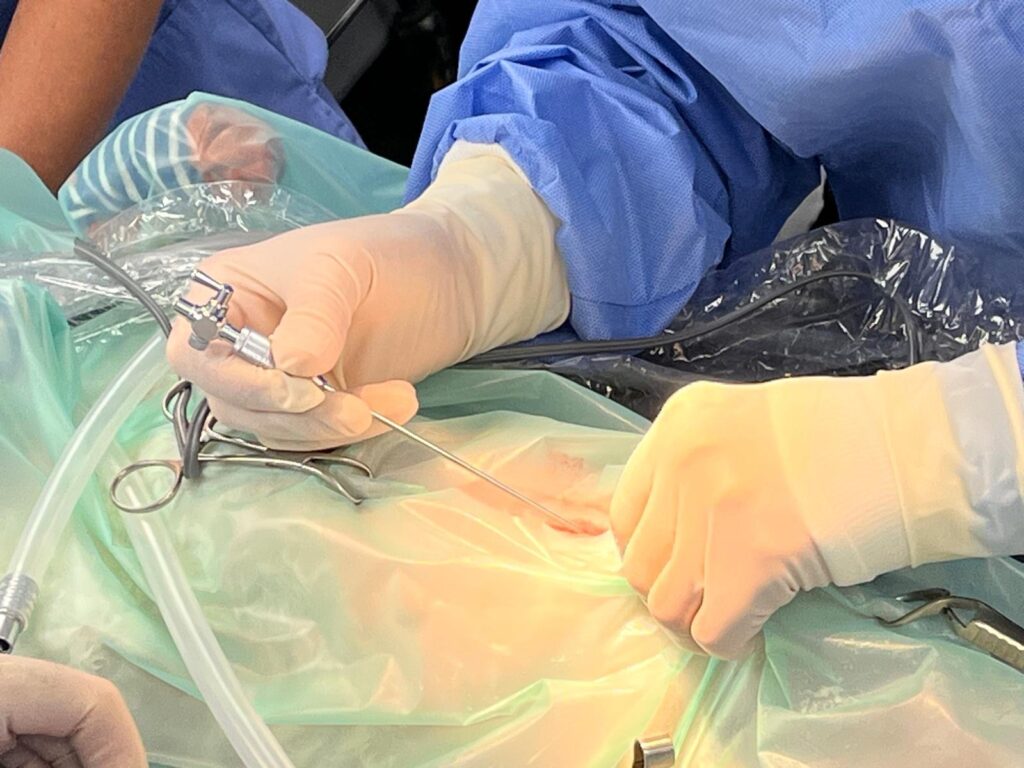
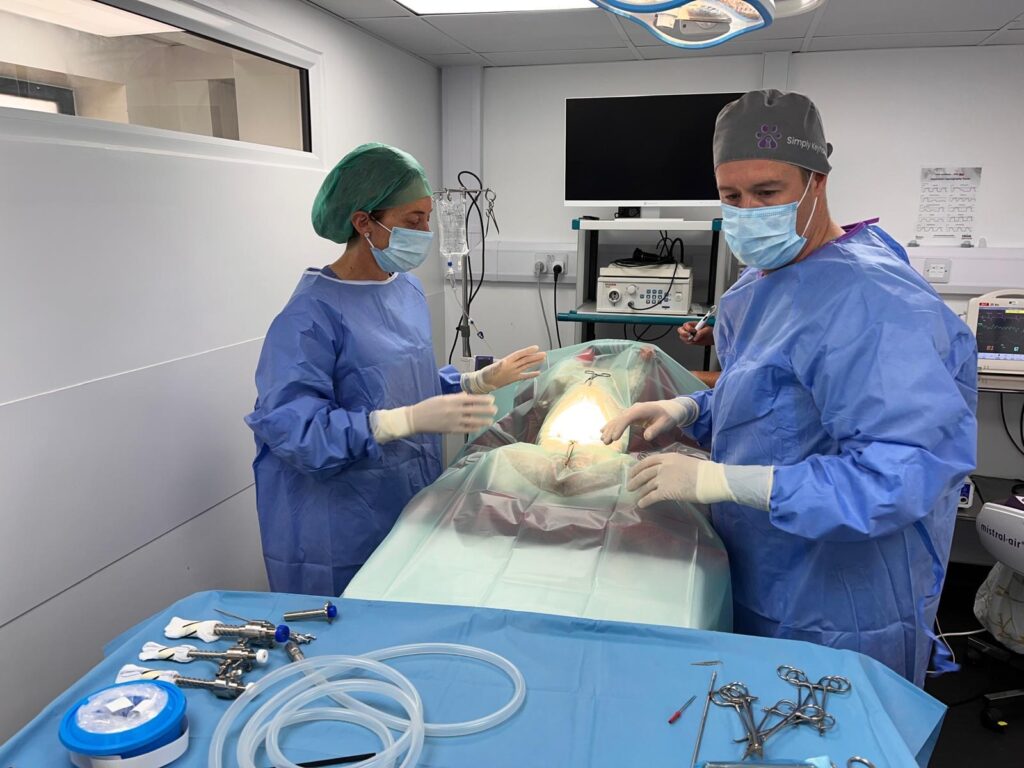
In a conventional spay, the ligaments connecting the ovaries to the abdomen have to be stretched, which causes pain. With keyhole spaying these ligaments are cauterised and cut to remove the ovaries, which is significantly less painful.
Due to the positioning of the instruments, is it necessary to clip a large area of hair on the sides and the belly. This ensures the area is sterile for surgery.
Both small incisions are closed with dissolvable stitches under the skin, so most pets do not pay attention to the wounds. It is important to ensure they don’t lick, so occasionally a pet will require a body suit or collar to prevent this.
For a conventional spay pets need to rest for 10-14days, with keyhole procedures the rest time is just 2-3 days so long as the recovery goes as planned.
Most pets are very comfortable after keyhole surgery. We administer pain medication on the day of their operation, but they usually do not require any when they get home.
Many studies have been performed looking into the risk of leaving the uterus behind. So long as the ovaries are fully removed, there is no benefit to the patient of removing the uterus. In order to develop pyometra, hormones are required, which come from the ovaries. Therefore, without ovaries, it is not possible to develop these conditions. If we see that the uterus looks abnormal during the procedure, we may be able to remove it laparoscopically or may advise converting to open surgery to do so.
The effect of both surgeries is the same. Spayed females will not have seasons, cannot become pregnant, and will not develop false pregnancies. Spayed animals cannot develop life-threatening uterine infections (pyometra) or ovarian tumours.
In addition, spaying a female dog before her third season has been proven to reduce the risk of developing mammary cancers later in life.
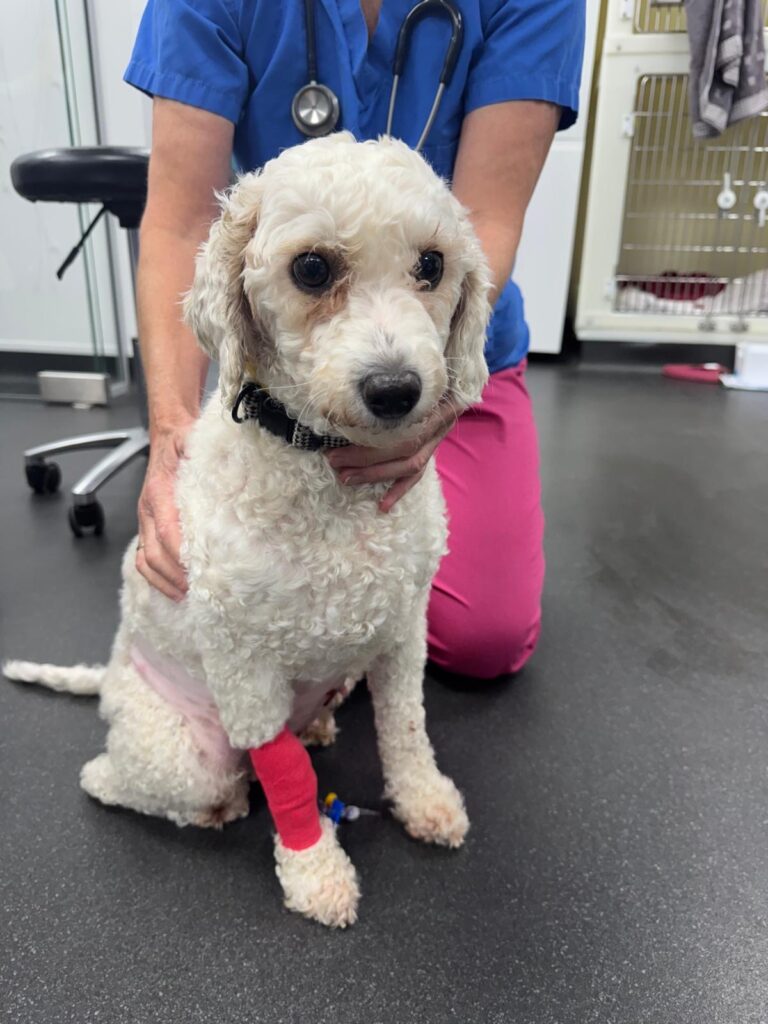
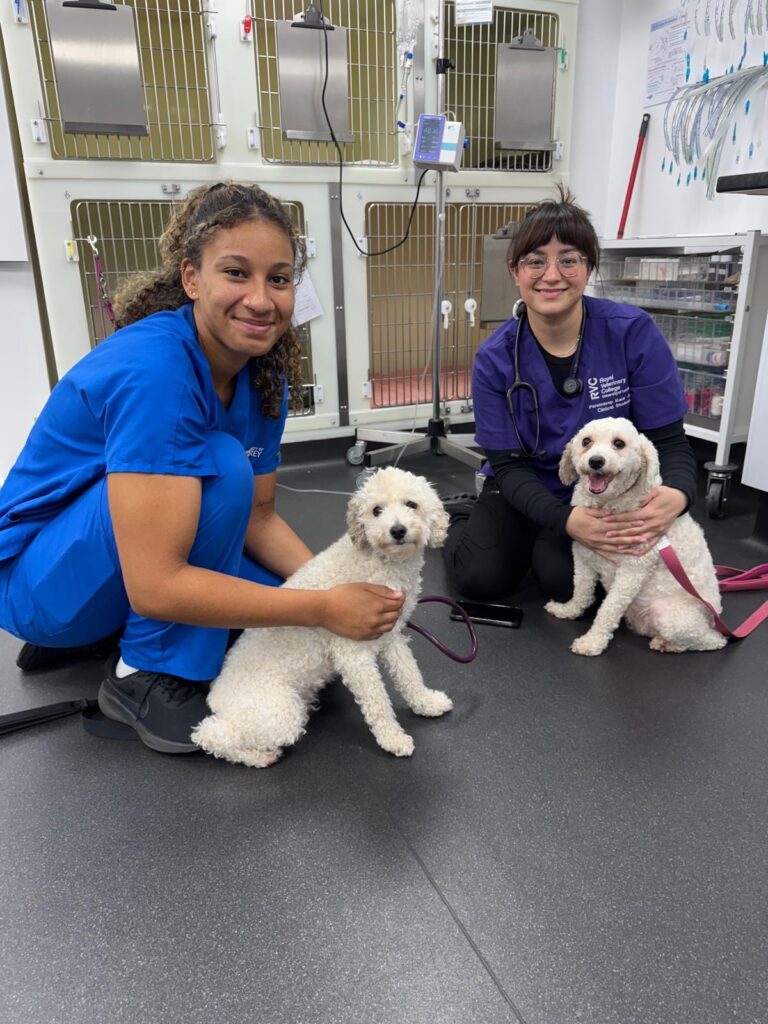
Keyhole surgery can benefit many other patients, and enables us to provide minimally invasive options for surgeries such as:
Keyhole surgery requires expert training for our team, and investment in and maintenance of the equipment. There is, therefore, an additional cost associated with most keyhole surgery compared to open surgery.
To book an appointment, or for further advice on keyhole procedures, please call us at the practice.
| Cookie | Duration | Description |
|---|---|---|
| cookielawinfo-checkbox-analytics | 11 months | This cookie is set by GDPR Cookie Consent plugin. The cookie is used to store the user consent for the cookies in the category "Analytics". |
| cookielawinfo-checkbox-functional | 11 months | The cookie is set by GDPR cookie consent to record the user consent for the cookies in the category "Functional". |
| cookielawinfo-checkbox-necessary | 11 months | This cookie is set by GDPR Cookie Consent plugin. The cookies is used to store the user consent for the cookies in the category "Necessary". |
| cookielawinfo-checkbox-others | 11 months | This cookie is set by GDPR Cookie Consent plugin. The cookie is used to store the user consent for the cookies in the category "Other. |
| cookielawinfo-checkbox-performance | 11 months | This cookie is set by GDPR Cookie Consent plugin. The cookie is used to store the user consent for the cookies in the category "Performance". |
| viewed_cookie_policy | 11 months | The cookie is set by the GDPR Cookie Consent plugin and is used to store whether or not user has consented to the use of cookies. It does not store any personal data. |
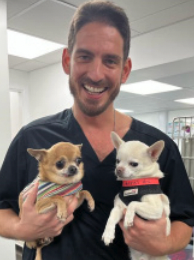
Since moving to the UK he has been working in busy hospitals, while training for his certificate in order to ensure high surgical caseload. For the past 3 years he has been the lead surgeon for a large group taking surgical referrals from the other clinics within the group.
He has attended many international congresses and courses to be up to speed with the most recent techniques and has trained with some of the best surgeons in the field.
He enjoys all aspects of soft tissue and orthopedics, but has a special interest in minimally invasive surgery, BOAS (brachycephalic obstructive airway syndrome) and traumatology.
He has a certificate in Advanced Veterinary Surgery and is an Advanced Practitioner in small animal surgery.